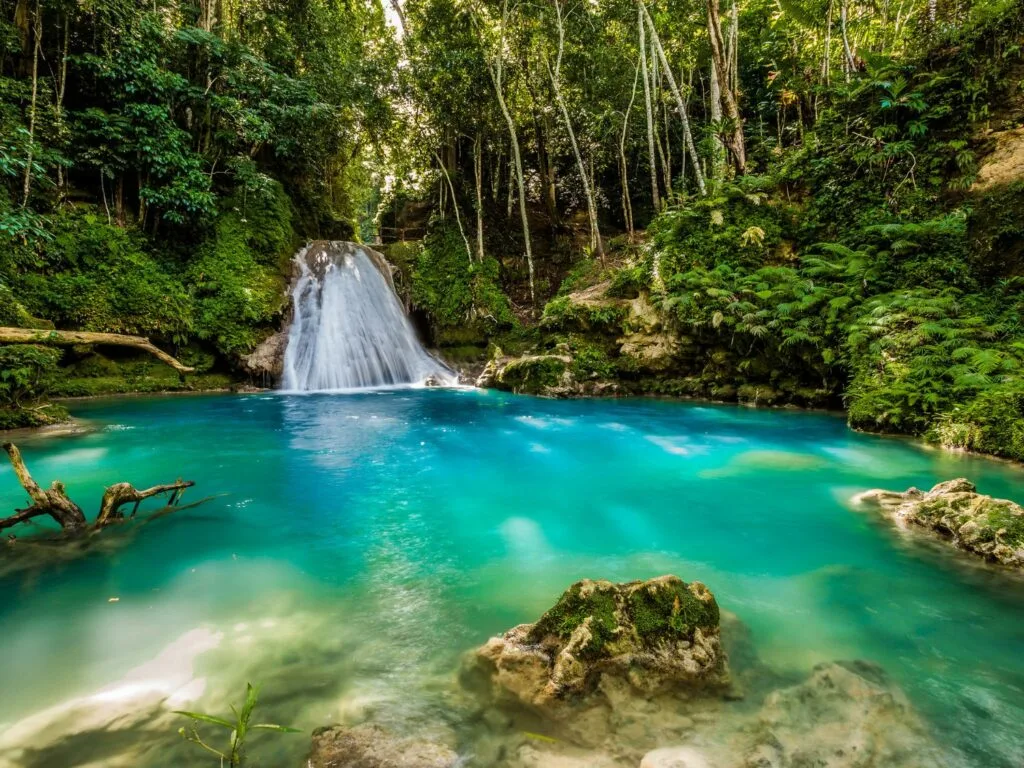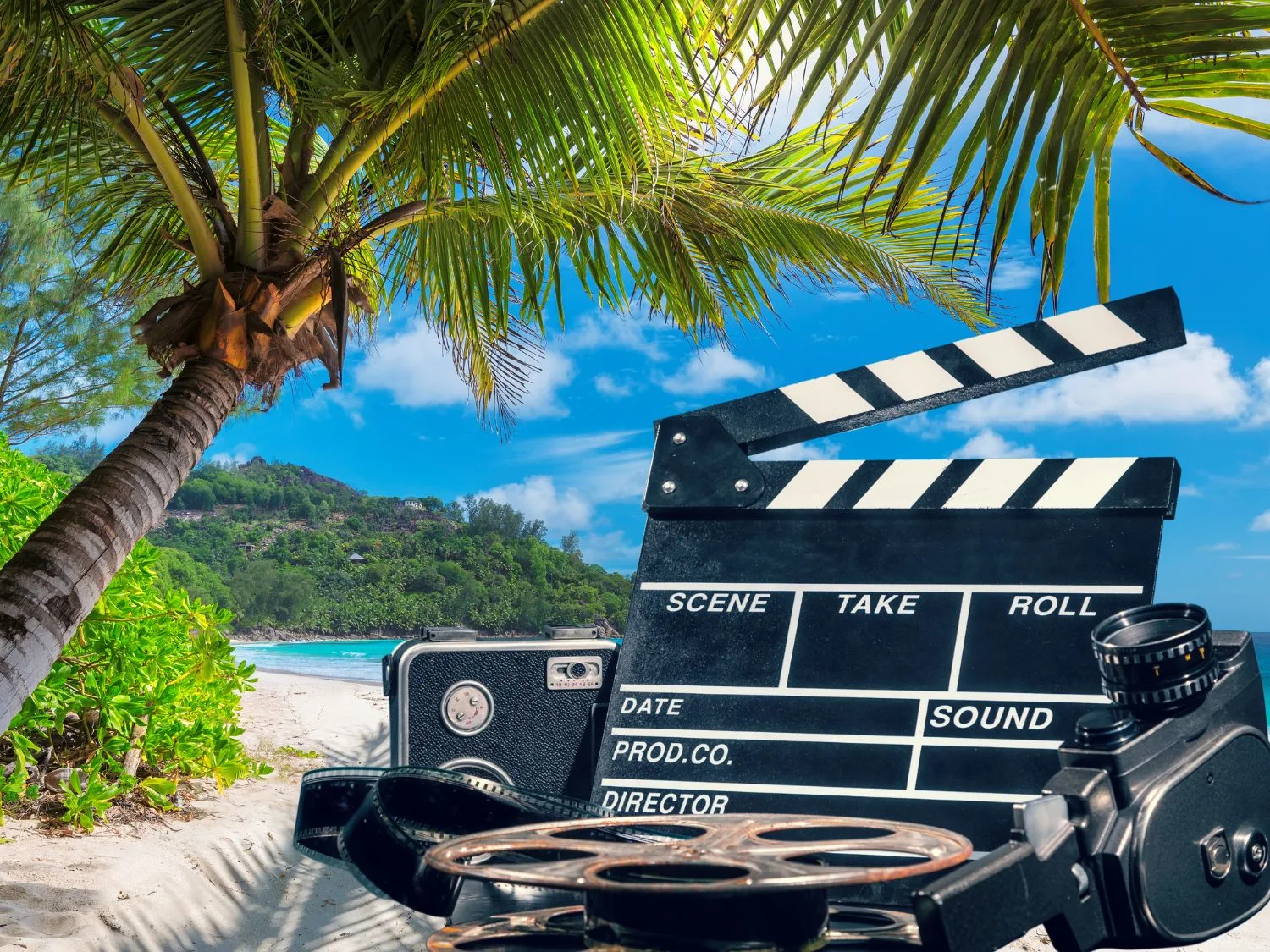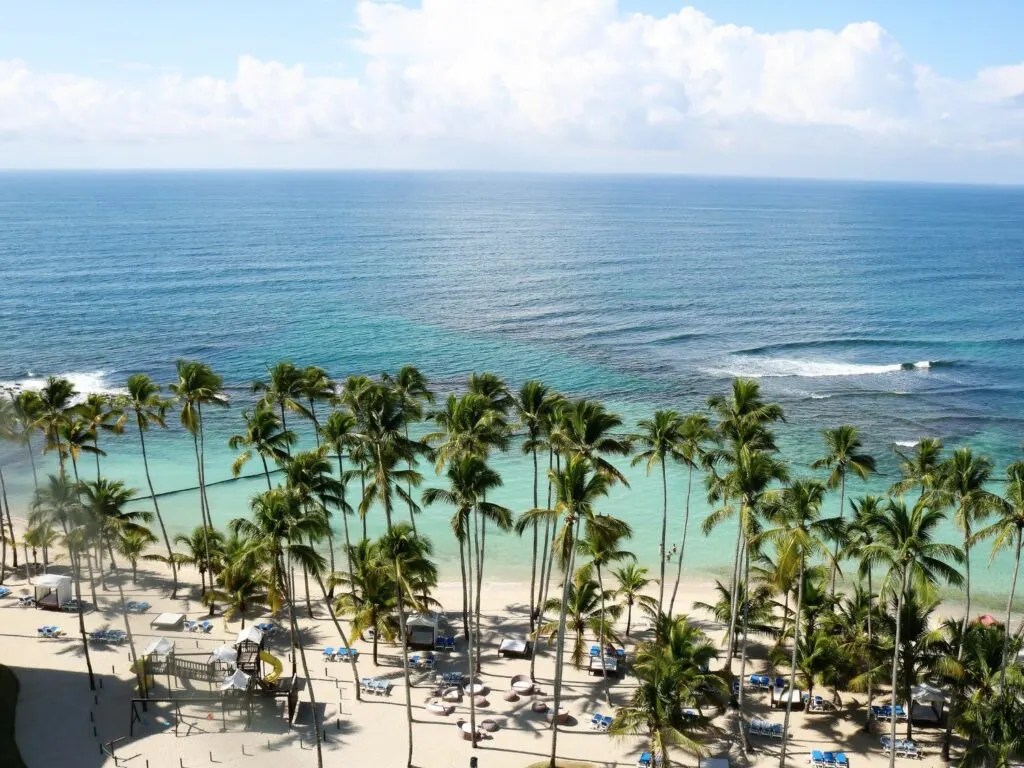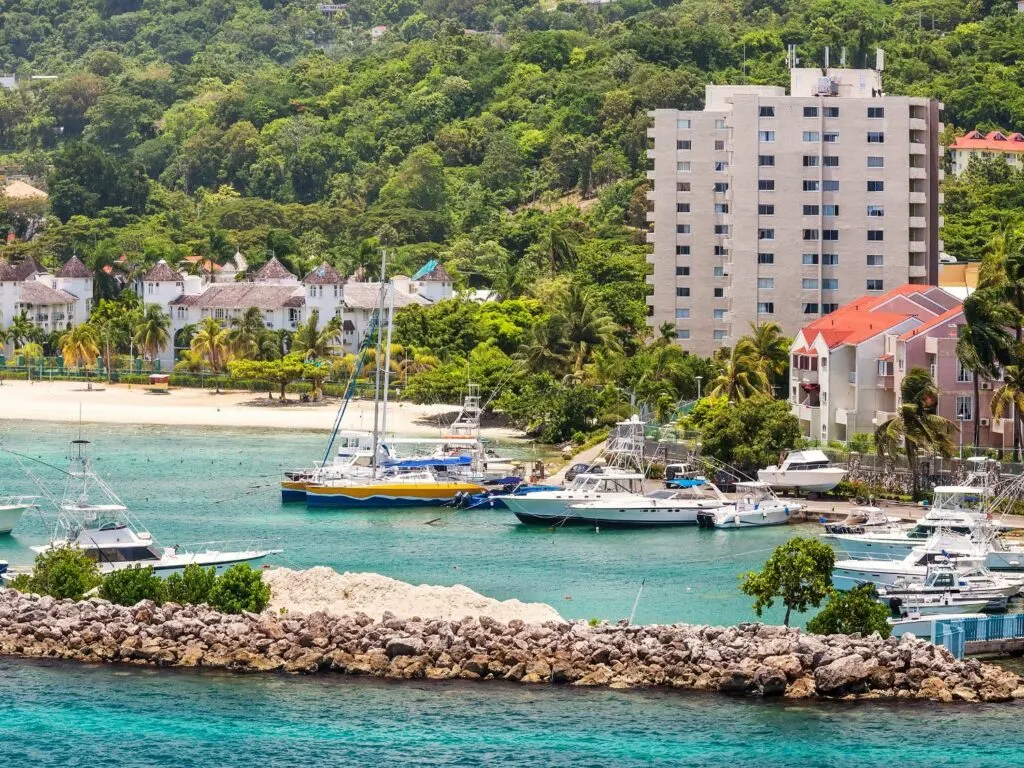Sofia De Vera combines a heartfelt passion for cinema with over 15 years of critiquing for esteemed film publications, wielding academic credentials from the University of Southern California and New York University, to serve as your personal guide through the enchanting worlds of film and television. Her full guest bio can be found here.
Jamaica has a lot to offer for both national and international filmmakers. The country is known for its beautiful beaches and majestic waterfalls. It is also well known for being the birthplace of reggae music, its cuisine and of course, its world-famous rum! So it will come as no surprise that there are so many wonderful movies set in Jamaica.
It’s hard to dispute that the Caribbean has some of the most beautiful places in the world. If you think about the word “paradise”, you’ll probably imagine the landscape of one of these islands.

Among them, Jamaica stands taller due to its rich history and captivating culture. Those who are unsure about visiting a place so far should pay attention, for the island has lots to offer: from the most postcard-like sights you can see, to some of the tastiest food on the continent. Not to mention the coffee.
There is one more thing to mention when it comes to this beautiful island: the world wouldn’t be the same without reggae, and reggae wouldn’t exist without Jamaica. The island was the birthplace of this musical genre and way of life. In fact, many of the core values of Jamaicans come from the reggae and Rastafari culture. It is rooted in their way of seeing the world.
A good look at Jamaica would mean seeing a little bit of all the aspects that make the country so beautiful. Each of these films will contribute to painting a greater picture. That picture is charming and colorful. That picture is Jamaica. Dive in, but don’t forget to put on sunscreen!
These films set in Jamaica have narratives that rely on their settings as much as their main protagonists, and as a result, spectators get a glimpse of this iconic country through the director’s eyes. To honor the concept of cinematic travel, we have also assembled lists of our favorite films shot in some of our all-time favorite travel destinations: Oregon, Edinburgh, Colombia, Ukraine or Turkey.
Wondering where to watch? It depends on where you live in the world and which streaming services you have. We link to the streaming service we watch on in each case - be it Netflix, Amazon Prime, Apple TV+, or elsewhere.
You can get one month free of Amazon Prime (or a 6-month trial for students) of Amazon Prime and also get immediate access to FREE Two Day shipping, Amazon Video, and Music. While you won't be charged for your free trial, you'll be upgraded to a paid membership plan automatically at the end of the trial period - though if you have already binged all these, you could just cancel before the trial ends.
Apple TV+ also has a one-week trial, and Hulu has a one-month trial (which can be bundled with Disney!). Another option might be using a VPN to access Netflix titles locked to other regions. Netflix is now available in more than 190 countries worldwide and each country has a different library and availability. US Netflix is (understandably) one of the best.
While we wish everything could just be in one place - for now, it seems these are the best streaming platforms to watch on.
Page Contents
Countryman (1982)
Countryman, by Dickie Jobson, is one of the most important movies made in Jamaica. This movie sits in a very particular place in the country’s film industry. Unlike many of the films in this list, not many people saw it when it came out.
While it has become more popular internationally, not that many people have seen it today. Yet is an influential part of many Jamaicans’ lives. It became a cult classic on the island, which is no surprise, for many folks saw themselves and their values represented in the titular character.
The film follows a fisherman who lives in solitude in a remote location in Jamaica. He is known only as Countryman and is credited as such—although now we know that he was played by the late Edwin Lothan. One day, he stumbles upon a plane crash near his home in the jungle. Among the wreckage, he sees that two people were still alive and decides to save them.
However, this good deed puts him in a kind of trouble he has never been in: these two men could unleash a political scandal in America if they were to be found by the wrong people. And that is Colonel Sinclair (Basil Keane), who has ordered a manhunt throughout the jungle. Countryman will do his best to protect them.
Countryman is deeply rooted in reggae. In fact, it was produced by Island Records, a label that was instrumental in the careers of many artists from all over the world, among which Bob Marley is of note. The film itself was dedicated to Marley and the values he stood for. There is no doubt that it’s an essential film for anyone planning a visit to Jamaica.
Rockers (1978)
This is certainly one of the best movies set in Jamaica and is for true fans of reggae. What was just said about Countryman also applies to Rockers: it’s a film with reggae at its roots. But this one is much more explicit. Rockers are about the reggae genre and movement, featuring the appearance of some of the most prominent figures in the scene.
Thanks to its documentary style, a big chunk of the film is comprised of real-life concerts and studio recordings by figures like Bob Marley and Kiddus I. Many of the events caught in this film went on to become essential reggae history.
What makes this movie so interesting is the fact that it began as a documentary project by Greek filmmaker Theodoros Bafaloukos. He wanted to capture the rising reggae culture that was taking over the island.
But as he got more and more material, he realized that he had something else in his hands: the chance to craft a cinematic experience that would use narrative to show what it was like to be a reggae musician back in that day.
He decided to weave a story through all the footage he got and managed to make a compelling film that would make you feel like you were there. Yet the story of Rockers isn’t what you probably expect.
It follows Horsemouth (Leroy Wallace), a drummer living in a ghetto who, after saving some money, buys himself a motorcycle. The film sees him setting off on his bike and trying to sell and distribute reggae records around the island of Jamaica.
When his bike is stolen by a group of gangsters, he and his gang will stand up for what’s right. The title of the film comes from the word that was used back then to describe reggae musicians.
The Harder They Come (1972)
Going back even further back in time is a film that’s a key part of the history of reggae. The Harder They Come is a crime film set in the city of Kingston, the capital of Jamaica. It follows the story of a poor man from the countryside who tries to make it as a singer in a big city.
The character of Ivan Martin was played by the talented Jamaican singer, Jimmy Cliff. Even though Martin is a great singer from the very beginning, it will take him much effort and suffering to even get to be heard.
This film is credited with some very important achievements, yet it’s perhaps one of the least-known films on this list. It was Jamaica’s first feature-length film. And it was made on a low-budget and nothing but a force of will: Perry Henzell managed to write, film, and direct this film almost all by himself—he collaborated with Trevor Rhone, who was a playwright.
With the little practice he had gotten making school productions, Henzell dived right in to make the country’s first feature and did a wonderful job at it. The movie was made by Jamaicans for Jamaicans: it showed the local culture in a naturalistic way and even used the local dialect that Jamaicans spoke.
The Harder They Come is also known for introducing the international public to reggae. Upon its successful release in Jamaica, the film was also distributed all around the world.
This exposed people not only to Jamaica but also to its culture. International viewers were most surprised by the groovy and charming songs that were played in the film and became very much interested in reggae as a result.
Smile Orange (1976)
Smile Orange, like these last three of the best movies set in Jamaica, was made in the seventies and stands as one of the best films that Jamaican cinema has to offer. Like the films before it, it offers a crude yet humorous look at the Jamaican-man experience. It’s a satirical film that pokes fun at racism and slavery as only a Jamaican could.
The film was directed by Trevor Rhone, the man who worked with Perry Henzell to make The Harder They Come. Smile Orange was based on a play he had written years before, which meant that Rhone had a good deal of experience directing actors in these roles.
The film follows Ringo (played by Carl Bradshaw, who was also in Rhone’s previous film), a Jamaican who works as a swindler: he earns his pay by conning unsuspecting tourists who come to visit the island. And he is good at his job: his way of speaking and personality will charm even those who are watching the film.
When he gets a job at a hotel on the island, The Mocho Beach Hotel, Ringo is forced to see that, even though Jamaica gained its independence in 1962, there is still much that hasn’t changed.
Smile Orange was shown all over the world and was praised by critics for its daring story and unexpected approach to a difficult subject matter. It seems strange to say in this day and age, but it seems like the film opened the eyes of many critics towards the way that black people were still being exploited, even though slavery was abolished.
Shottas (2002)
Crime has been the main part of Jamaican films ever since its very first feature-length, The Harder They Come. Through time, different directors have had different approaches to portraying the criminal side of Jamaica.
What’s great about Shottas is that it was made by people who were born and raised in Kingston, who had a good grasp on what they are depicting, and who are aware of the dangers of these kinds of films.
This film was made almost in its entirety by Cess Silvera, a Jamaican filmmaker who hasn’t worked on many successful projects. It would be fair to say that Shottas wasn’t successful either: the film could be seen in Jamaican cinemas for a while and only got a limited release in the United States.
Before the film was even released, an unfinished copy leaked and was distributed through the Internet. However, the people who got to see it loved it and became fans of the film. When it was time to see it in theatres, those people were there. But the window to see the film was so small that very little money was made from ticket sales.
Shottas tells the story of two young men who, after growing up together in the Kingston ghetto, find themselves living a life of crime in Jamaica. These men are played by Spragga Benz, a local DJ, and Ky-Mani Marley, the only son of Bob Marley.
The film will see them coming out with new ways of thieving, eventually becoming extortionists. When the police get too close to their tracks, they decide to flee to Miami, where a fitful end will meet them.
Yardie (2018)
The name Yardie may sound familiar to you. Before its 2018 adaptation, it was a very popular book in England and Jamaica. Written by Victor Headley, Jamaican-born and British-raised, the book was one of the first to be made by and for black people. It is said that this was the novel that prompted bookstores to reserve a spot for books written by black people.
The book tells the story of a young man from Jamaica who becomes a key figure in London’s underworld. However, the film goes in a different direction.
Directed by famous English actor Idris Elba, the film tells a smaller story than the book, one that is much more focused on Jamaica. It follows the life of Dennis Campbell (Aml Ameen), referred to simply as D, a Jamaican man who becomes involved in a transnational drug-dealing plot.
Yardie begins in 1973, with D living with his brother in Kingston, and shows the two of them as they try to help two gangs make peace. But everything takes a turn for the worse when his brother is killed.
The audience catches up with D ten years later and we see that he has become a part of one of the gangs. It’s his business as an enforcer and drug dealer that will see him traveling to London with a pack of cocaine. There he will meet an old friend of his and rekindle a lost love. When he tries to escape his ties with the gang, things will get even sourer.
Home Again (2012)
All the way from Canada comes this film that takes a deep and long look at immigration and deportation laws. Home Again, by Sudz Sutherland, follows three people who had emigrated from Jamaica with their families when they were children but are now forced to go back to the country, they know almost nothing about and barely lived in.
Of course, the title of the film is ironic: no one of these people considers Jamaica their home. It is, rather, their hell, for the locals aren’t very keen on those who went away.
Each of these three people has a touching story behind it. With a bad record and four years in prison, a man (Lyriq Bent) is deported from the United States. When the British authorities find weed in his possession, a young boy (Stephan James) is sent away. Not only is a mother of two (Tatyana Ali) been forced to leave her children in Canada, but she also finds herself being broken up with by her boyfriend who was secretly a drug dealer.
Home Again does a great job of showing a side of Jamaica that tourists don’t usually see. It will help you open your mind to different ways of experiencing the city. It’s not pretty to see, but the stories told here are those of real people.
Clara’s Heart (1988)
Back in 1988, people were in love with Whoopi Goldberg in everything she was in and had no clue who a young boy by the name of Neil Patrick Harris was. Also, back then, a new movie by Robert Mulligan —the director of To Kill a Mockingbird, among many other classic films— meant that the stars were aligned and something magical was happening.
When Clara’s Heart came out, it became quite an important hit, amassing a luxurious box office. However, it was very badly received by critics. There was a very big expectation around this movie, and it didn’t seem to meet it at all. But today we can look at it with new eyes and try to see what, in that time, people couldn’t see.
Clara’s Heart it’s told in a subdued manner which was very different from how movies at the time were made. In fact, it is different from the way that movies are made today. The movie follows a woman named Clara (Goldberg) who works as a maid in a Jamaican hotel. There she meets David Bart (Harris), the son of two grieving parents who have lost their daughter.
The film will see her playing a key part in the family’s healing, being there for David when no one else seems to be.
Even though the plot still doesn’t hold completely up, it is surprising to see such a powerful performance by this young and brave Goldberg. But it’s not a surprise to learn that Harris got to where he is today, for his talents in front of the camera were clear even then, in his first role. Clara’s Heart tells the story of a different kind of Jamaica.
Cool Runnings (1993)
Any kid who used to watch Disney Channel back in the 90s and 00s should be familiar with this charming film. Cool Runnings, by Jon Turteltaub, told the story of a group of Jamaicans who, against all odds, set out to compete in the Olympics. But not any Olympics; the Winter Olympics. And bobsleigh of all sports.
The irony of the matter may be lost if you happen to be unfamiliar with what bobsleigh is about: this sport was established in the 1870s and consists of a race down a snowy, twisting, and sloped circuit with an aerodynamic sleigh. For a whole generation, Cool Runnings was the first time they ever came in contact with the sport.
What’s even more interesting than the premise is the fact that the film was based on a true story. In 1988, the Jamaica national bobsleigh team made their debut at the Winter Olympics to the astonishment of all watching. Of course, coming from a tropical country, there weren’t any tracks they could practice on, so lots of their training was done on wheels.
They hadn’t been provided with much in terms of equipment either, but luckily the other teams chimed in and lent them some of their gear. As you may imagine, they didn’t do so well, but they managed to make a good first impression for a team of underdogs who had all the odds against them.
Cool Runnings begins in 1987 in Jamaica with Derice Bannock (Leon Robinson), a sprinter who was on the verge of qualifying for the Olympics. It seems like his chance to compete is completely gone, but then he discovers that the committee leader of the tournament was a bobsled medalist. Device figures that this is his chance and decides to create the first Jamaican bobsled team. To do so, he and his newfound team prepare by going down Jamaica’s streets in pushcarts.
Pirates of the Caribbean: The Curse of the Black Pearl (2003)
By this point in time, one would think that most people are familiar with Pirates of the Caribbean. But younger generations who were born after the first three movies came out —which were the most popular and the best— haven’t had the experience of seeing the wonderful original trilogy.
Not all of them take place in Jamaica, but they are a great resource to explore the wonderful sights that the Caribbean Islands have to offer.
Even though the first three movies are great, we’re only going to talk about the first one here to keep away from spoilers. Pirates of the Caribbean: The Curse of the Black Pearl follows an infamous pirate by the name of Jack Sparrow (played by Johnny Depp) as he tries to get his hands on a precious but cursed ship known as the Black Pearl.
He will unwillingly find himself working with Will Turner (Orlando Bloom), a young blacksmith, to rescue Elizabeth Swann (Keira Knightley) from the hands of the pirates aboard the Black Pearl.
The first movie takes place in Port Royal, a key city during the times of pirates and traders back in the late 17th and early 18th centuries. Located on the southern shore of Jamaica, this was one of the ruling seats of the British Government in the Islands.
However, it no longer exists: now it’s just a village that was taken over by time. Still, it’s a wonderful place to visit and remember the good and bad deeds that were done there.





